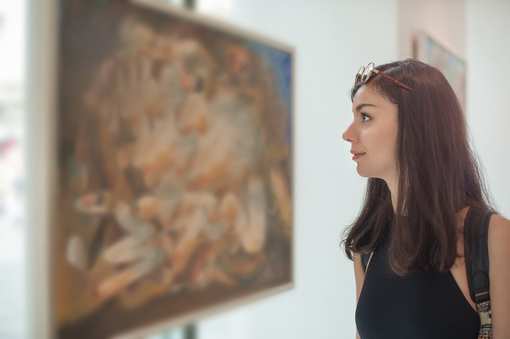Built in 1859-60, the Gibson House stands as the historic house museum of the Back Bay. In 2001, the National Park Service declared the Gibson House a National Historic Landmark. It is unique as an unspoiled single-family residence that retains its kitchen, scullery, butler’s pantry and water closets, as well as formal rooms and private family quarters, filled with the Gibsons’ original furniture and personal possessions. Visitors enjoy a glimpse of the lives of a well-to-do Boston family and their domestic staff.
The Gibson House and the Back Bay
In 1860 when construction on the Gibson House was completed, the population of Boston was 177,902, making it the fourth largest city in the United States. In 1855, to accommodate the city’s growth, Boston began what is still one of the most ambitious urban development projects ever undertaken: the filling in of the Mud Flats or “Back Bay” west of the Public Garden. This urban development project lasted until 1886, by which time 400 acres of new land had been created.
Urban planner Arthur Gilman was influenced by the French style of long boulevards with extensive vistas—a radical departure from the narrow streets and English style of residential squares and crescents found on Beacon Hill, the North End, and the newer South End. At first, people were suspicious of the “New Land,” but the area soon became a popular and fashionable residential neighborhood. Homes in the Back Bay were equipped with the most up-to-date conveniences including gas lighting and running water provided by public gas lines and a 96-mile water and sewer system. Back Bay also began to attract numerous churches, schools and cultural institutions. In addition to the Arlington Street Church and Trinity Church, Back Bay became home to the Museum of Fine Arts, the Boston Public Library, and the Massachusetts Institute of Technology with the nation’s first School of Architecture.
The Story of the Gibson Family at 137 Beacon Street
The Gibson family story begins with the pioneering move of the widow Catherine Hammond Gibson and her son, Charles Hammond Gibson, from the top of Beacon Hill to the just-developing flats of the Back Bay. In the 1860s, Back Bay was in the early stages of transformation from a malodorous marsh to the most fashionable residential neighborhood in the city. The filling of the Back Bay was the largest public works project of its time. Catherine was among the first to venture into this raw wasteland, and was one of very few women to own a house in the “New Land,” as it was called.
Designed in the Italian Renaissance style by the noted Boston architect Edward Clarke Cabot, the house is built of brownstone and red brick. Its interiors are both tasteful and ornate, with black-walnut woodwork, elegant wallpapers, imported carpets, and an abundance of furniture, paintings, sculpture, photographs, silver, porcelain, curios, and 18th-century family heirlooms.
In 1871, a decade after the Gibsons set up housekeeping at 137 Beacon Street, Catherine’s son Charles married Rosamond Warren, a member of the distinguished family of Boston physicians. (Her great-uncle, General Joseph Warren, had died while leading American troops at the Battle of Bunker Hill.) After her mother-in-law’s death in 1888, Rosamond redecorated parts of the house in the latest fashion, including white woodwork in the music room and gold-embossed “Japanese leather” wallpaper in the reception hall.
The Vision of an “Improper Bostonian”
The Gibson House Museum exists because of the vision and family pride of Charles and Rosamond’s middle child, Charles Jr. He was a poet, travel writer, horticulturalist, and colorful bon vivant. However, his eccentric lifestyle was viewed with raised eyebrows by more proper Bostonians and family members. His sartorial tastes were impeccable: he persisted in appearing in formal attire—a morning coat, spats, and a cane—long after these were in fashion. Neighbors observed him setting out each evening, exactly at six, for dinner at the Ritz, often in a full-length fur coat.
Caught in a changing world, as families moved to the suburbs and left their townhouses to be converted into rooming houses, schools and dormitories, Charles Jr. tried to preserve a piece of the Victorian era he remembered from his youth. The Gibson House Museum began to take shape as early as 1936. The furniture was already roped off with gold cord, and so his guests were invited to sit on the stairs while sipping their tea or martinis (made from his own bathtub gin).
Mr. Gibson died in 1954, the last of three generations of his family to live in the house. The Gibson House Museum was officially opened to the public as a museum in 1957.
Help Us Keep Mr. Gibson’s Dream Alive
Charles Jr. correctly predicted that his house’s importance would not be recognized until the year 2000; indeed, despite national recognition in 2001, the Gibson House remains one of Boston’s least-known treasures. Its holdings are a valuable resource for students and lovers of late-19th- and early-20th-century architecture, decorative arts, and social history. The period wallpapers, carpets, and other textiles are especially important. The Gibson House has also attracted filmmakers seeking authentic interiors for period documentaries and dramas, most notably Merchant-Ivory’s The Bostonians, filmed in 1983.
In the 1990s, the Board of the Gibson House Museum initiated two major outreach efforts: establishing the Friends of the Gibson House Museum and securing substantial grants from local and national foundations. The Friends, established in 1995, is the Museum’s membership group and organizes the Annual Benefit Tea. The Museum offers an expanding schedule of public and school programs, group tours and special events. Monies raised in the 1990s enabled the restoration of the Museum’s exterior, including roof, front steps and gate, windows and the rare one-story shed at the rear of the house. An inventory of the varied collection approaches completion, bringing to light many objects and documents pertaining to the Gibson family and to Boston life during the late 19th and early 20th century.
The Museum’s mission is to preserve and exhibit the house and its collections for the education, enjoyment, and inspiration of the broadest possible audience. The Friends invite you to become a member and help make Mr. Gibson’s dream a reality.






